 |
- OTHER SERVICES VOICES:
- MARINES
- •
- NAVY
- •
- AIR FORCE
- •
- ARMY
- •
- COAST GUARD
|
An up close and personal interview with Air Force Veteran and TWS Member:
Staff Sergeant Roger Hamann (USAF 1970-1974)
WHAT PERSUADED YOU TO JOIN THE Air Force?
I was about to complete my first year of art school and was in hopes of transferring to the same college my girlfriend (now wife) was attending; problem was, the college wouldn't accept my credits and I'd have to start as a freshman there. The Selective Service's draft was in full swing and I had a very low number. Not envisioning myself as a Marine or Army type who would be fighting 24-7 in Vietnam and not a water person (Navy) but still with a strong desire to serve my country as had my Dad and his brothers, I decided to enlist with the Air Force and what I felt would be a much less risky way of fulfilling my obligations to God and country.
BRIEFLY, WHAT WAS YOUR CAREER PATH?
I can't say I had one mainly because I only served a total of three years and eight months before I took the "early out" option in late 1973, which resulted in my separation from the Air Force in February of 1974, four months earlier than my scheduled release. But to answer your question as can best be summarized, my path began when I was one of only four from my BMT class to receive a DDA assignment, a POL (Fuels Specialist) assignment to Wurtsmith AFB in Michigan, arriving there in August of 1970. Looking back, I must say it was a great way to begin my tour as the area reminded me a lot of my home state of Maine. I've often wondered if I learned more by having an assignment such as this as opposed to going to a tech school first. I've always considered myself to be more of a "hands on" type of learner and so I guess I lucked out to have started the learning process of becoming a fuel specialist with that type of assignment.
Before going any further I should note that I had taken a French language test while going through BMT. That spur of the moment decision would forever change what could have been a rather, for lack of a better word, uneventful, POL career path. As a child growing up in a French-Canadian family, both of my parents were originally from Canada, my mother always insisted that I never lose my French speaking ability. Little did I realize at the time how that last minute decision to take that test would make such a big difference during my time spent in the Air Force.
After about 8 to 9 months at WAFB, I decided it was time for a change and so I put in a volunteer statement to go to Thailand or Vietnam. How dangerous could a POL assignment in Southeast Asia be, right? Nothing resulted from that request for a while as "Vietnamization" was beginning to unfold and troop numbers in Vietnam were slowly being reduced. During the early summer of 1971 I received orders for Vietnam, but they weren't for a POL assignment. As I read through the paperwork in my hands, it asked if I would volunteer for a special assignment, that I would be flying and that I would be required to attend several survival schools before reporting to my next base. All I could think of was that one word, flying! Me? Never in a million years did I ever imagine myself actually flying while serving in the Air Force, a POL guy no less! How could I say no to such an opportunity? I should also mention that the reason I'd been asked to accept this assignment was the fact that I could speak French.
Upon completion of testing and survival schools at Wright-Patterson AFB, Fairchild AFB and Clark AB, I arrived at Phan Rang AB, SVN in mid October, 1971, a few weeks shy of my 21st birthday. It was then that I was told I would be flying as an airborne interpreter in the back seat of a two-man observation type airplane, the OV-10. After about 3-4 weeks at Phan Rang, it was decided I would be going to Ubon RTAFB in Thailand as the squadron I would be assigned to, the 23rd TASS, Rustic FACs, were moving from Bien Hoa AB, SVN to Ubon RTAFB as part of the "Vietnamization" process. It was at Ubon where I flew my first mission as a FAC GIB (Forward Air Controller - Guy in Back) on November 11, 1971. My Rustic tour ended with my final (fini) flight on August 25, 1972, my 169th mission.
In early September of 1972, I reported to my new duty station, Loring AFB in northern Maine, where I resumed my original AFSC, that of a POL jock. It was quite a culture shock to go from driving an R-5, 5,000 gallon JP-4 fuel truck in Michigan, to "driving" in the back seat of an OV-10 Bronco, fighting a secret war in Cambodia (to many at the time) and then going back to driving a fuel truck once again in Maine. I believe those changes in my Air Force environment led directly to my decision to take an "early out" in 1974.
DID YOU PARTICIPATE IN COMBAT OPERATIONS?
Yes, although I never expected to do so when I enlisted in the Air Force. Our job as an airborne interpreter was that of a "go between". All the GIBs (Guys in back) came from the enlisted ranks. Since many of the FAC pilots did not speak French and many of the Cambodian Army ground commanders did, our job was to interpret the information being passed on to the FAC pilot so that appropriate actions could be taken. France once occupied Cambodia, hence the reason why some Cambodians spoke the language. As a GIB, our job also involved monitoring five radios, keeping open lines of communications between the pilot, ground commanders, fighter aircraft being prepped for an air strike and any other FACs that might be in the AO. We were that extra set of eyes looking for ground fire while an air strike was being directed, that extra set of ears listening for additional air support requests for a developing TIC (troops in contact) situation or God forbid the beep of a parachute if anyone involved in a FAC mission was shot down. The mission of the Rustic FAC was, first and foremost, exactly what FAC stands for... forward air controller. We controlled air - air strikes by A-37s and F-4s mostly in central Cambodia. After requesting air and getting clearance for a specific target from Bluechip (Saigon), friendlies in the target area, (if there were any nearby), would be notified. Once the fighter aircraft arrived on the scene, they were briefed about the target, what to expect for ground fire, safe bail out locations, weather, location of enemy and friendly forces, bomb run directions and so forth. Once all involved had been briefed, we went down to mark the target with white phosphorous rockets, aka "Willy Petes". We then flew back up to an orbit around the target area, away from the fighters' bomb runs and continued to direct the air strike, making additional marking dives as needed. We made sure to remain in contact with the ground commanders and advised all aircraft involved of any ground fire until all ordnance had been expended and/or the target had been destroyed/eliminated or the TIC had been broken. Once the air strike was completed fighters were told to hold high above the target area while we went down to do a BDA (battle damage assessment). The BDA was then passed along to the fighters which returned to their home base while we continued on to the next ground commander's position or made our way back to Ubon, depending on how much fuel we had left. A typical mission was 4-5 hours in duration and we flew 5-6 missions daily, day missions only. We also self-expended if air was not available.
[Editors Note: See the link opposite for a historical description of the "Rustic" Forward Air Controller missions in Cambodia, 1970-1973]
FROM YOUR ENTIRE SERVICE CAREER WHAT PARTICULAR MEMORY STANDS OUT AS BEING THE ONE WHICH HAS HAD THE LARGEST IMPACT ON YOU?
There is one memory that still lives on in my mind to this day. It was Christmas morning, 1971, my 32nd mission. Rustic 06 and I had the first mission that day, a 0500 take off. Shortly after we "crossed the fence", the Thailand/Cambodia border, I began my ritual of trying to reach our Cambodian allies on the FM radio. Soon, I heard the familiar voice of San "Sam" Sok in Kampong Thom. Sam was a captain in the Cambodian Army. There was no more friendlier voice to hear over those airwaves than that of Sam, always cheerful, thankful and most of all, sincere. He loved talking about "Wine, Women and Song", but not necessarily in that order!
On this particular day however, Sam’s voice came across the wavelengths with a serious tone and impending doom. His troops and the villagers of KP Thom had been the recipients of heavy mortar fire throughout the previous evening, resulting in many being mortally wounded. Sam passed the map coordinates to me by way of a code wheel we used and changed on a daily basis. He stated that at these coordinates we would find two "hooches" located on the Northwest corner of a bend in the river and that his scouts reported this is where the VC/NVA were launching their mortars the previous night. We flew to the area described by Sam and did a visual recon of the sight. As my pilot circled above that bend in the river, I looked for any signs of activity through my binoculars. There was none; no people, no gun pits, nothing, save for the two "hooches."
The soldiers in KP Thom were outgunned and under supplied. Sam asked that we put an immediate air strike on said location. Sam, as well as the Rustics, knew that approvals for an air strike did not come that quickly. Nevertheless, R-06 pleaded Sam’s request to Bluechip/7th AF (Saigon) and in a matter of ten minutes or so (maybe Bluechip was in a giving mood with it being Christmas), we were notified that a set of A-37s would soon be headed out to our AO. The fighters checked in about 15 minutes later and R-06 proceeded with his briefing, describing the target, elevation, weather, enemy and friendly locations, best possible bailout areas, etc. While this was going on, I kept in touch with Sam, notifying him that we were almost ready to put in an air strike for him and to make sure there were no friendly forces in the target area. This flight was carrying Mk-82s, 500-pound bombs. The lead aircraft went in on his first pass and dropped his first bomb shy of the target, the "hooches" mentioned earlier. The results however, were, shall we say, a wakeup call. Suddenly, amongst all the dust and debris, about 50 or so black pajama clad humans came running out of those two "hooches," heading into and under the coverage of the nearby jungle canopy. Before any of them got very far the second aircraft was making his first pass and this one found its mark! R-06 called for the fighters to hold high while we went down to visually recon the area for BDA. As soon as the dust settled we slowly circled our way down to see the after effects of two MK-82s; total annihilation, that’s the only way I can describe it. There was nothing but bits and pieces of the enemy remaining. Neither 06 nor I said anything to each other for a few minutes. But then, in an uncharacteristic moment, I keyed my mike and said, "Merry F***in’ Christmas". My pilot simply responded with a double click of his mike. Anyone who knows me would say I never would have said that on the radio, but I did. Still to this day, every Christmas, I think of that mission, those words, and that scene below me.
Up until then, the targets I had been involved with were usually that of suspected ammo dumps, VC training areas or mortar/gun pits, always under the cover of triple canopy jungle. But this one target, these two "hooches" sitting quietly by the riverbank, seemingly unoccupied and on a Christmas morning, that one was an eye opener. This time I saw humans, obviously fighting for their own cause, much like myself but for different reasons. We got the best of them that day but there would be other days, with different results. Sam was ecstatic with the results of the air strike and thanked us endlessly for our support. His people would be able to rest now, if only for a day or two before the whole process would begin again in earnest.
WHICH INDIVIDUAL PERSON FROM YOUR SERVICE STANDS OUT AS THE ONE WHO HAD THE BIGGEST IMPACT ON YOU...AND WHY?
My NCOIC at Ubon, MSgt. Joe Garand, a fellow Mainer and Rustic GIB had the biggest impact on me. Joe was a family man with a wife and three kids back home. Joe always conducted himself in a highly professional manner, setting an example for all his men to follow, whether it was during combat or off duty. He was the person I looked up to since I was but a mere two striper, still young and naive, learning as I went along about what it meant to be a team player in a combat situation with only your pilot and yourself there in that small two-man plane making life and death decisions on a daily basis. I'm proud to say Joe and I continue to be friends now even after a 25 year hiatus when we lost contact with each other. Joe is the epitome of what brotherhood amongst servicemen is all about. I'm not ashamed to tell everyone I dread the day I lose this brother in arms.
WHAT PROFESSION DID YOU FOLLOW AFTER THE SERVICE AND WHAT ARE YOU DOING NOW?
Being a "hands on" learner, I went into the construction trade working mostly on agricultural type buildings. After a few years of seasonal layoffs, I found a job as an apprentice cabinetmaker with a store fixture manufacturing company in 1976. I worked myself up to journeyman cabinetmaker, lead man and eventually foreman of the assembly department. On June 5, 2009, 30 years and a week after I first set foot in that woodworking shop, I was laid-off, the last one let go due to the economic downturn. We were officially notified on Oct. 1, 2009, that the shop would not re-open. I am now in the process of turning my dream job into reality of providing a locator service to specialize in helping adoptees find their birth parents.
HOW HAS SERVING IN THE ARMED FORCES INFLUENCED THE WAY YOU HAVE APPROACED YOUR LIFE AND CAREER?
This is a tough one to answer, not because I don't know the answer, but because of what my answer is. The time I spent flying missions in Cambodia had changed me forever, although I didn't always realize it for many, many years. Family and friends noticed a change in me which I didn't recognize until about 12 years ago. But since then, I have made it a point to try to give back to my community in my own personal way. My story is no different than many who share similar experiences. We did what we had to do, what we were ordered to do. Now we deal with it, or do our best to do so. Donating blood on a regular basis, becoming a hospice volunteer and helping others find long lost loved ones is how I am coping with memories of a time spent serving the country I love. I am proud of my service but still question things that happened back then during that year in Southeast Asia. My old scouting days bring me back to the line, "On my honor, I will do my best, to do my duty to God and my country." I can only pray that I will be judged on that final day by those ideals.
HOW HAS TOGETHERWESERVED.COM HELPED YOU TO MAINTAIN A BOND WITH THE SERVICE AND THOSE YOU SERVED WITH?
TWS has helped me to connect with those who share the same feelings I have about that special bond that exists between fellow service men and women, no matter what branch of service. I may not post often to the site but I try to visit the site daily. Not being one that is comfortable with a large number of people makes this setting easier to deal with. It is easier for me personally to express myself with the written word as opposed to a face to face meeting. TWS helps to get some of those pent up feelings out in the open. TWS is good therapy for the soul.
| 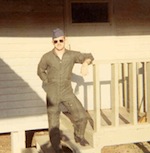
Staff Sergeant Roger Hamann
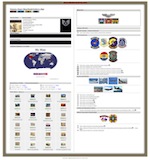
View Staff Sergeant Roger Hamann's Shadowbox on TWS
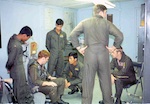
Training a few Cambodian pilots
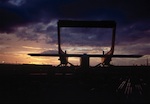
Sunrise at Ubon
|
|
Share this Voices Edition on:


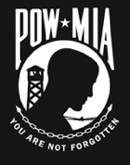
 |
|
TWS VOICES
TWS Voices are the personal stories of men and women who served in the US Military and convey how serving their Country has made a positive impact on their lives. If you would like to participate in a future edition of Voices, or know someone who might be interested, please contact Major Wesley Prater HERE.
View the Complete Togetherweserved Voices Archive HERE
This edition of Air Force Voices was supported by:
airforce.togetherweserved.com
For current and former serving Members of the United States Air Force, Army Air Corps, Air Force Reserve and Air National Guard TogetherWeServed is a unique, feature-rich resource helping Airmen reconnect with lost Wingmen, share memories and tell their Air Force story.
Click HERE if you need a password reminder for http://AirForce.togetherweserved.com.
|
|